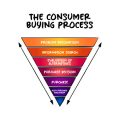Understanding Whole Life Insurance
When considering life insurance options for your family, it’s important to start by understanding what whole life insurance is and how it works compared to other popular types of policies in the United States.
What Is Whole Life Insurance?
Whole life insurance is a type of permanent life insurance. Unlike term life insurance, which only covers you for a specific period (like 10, 20, or 30 years), whole life insurance provides lifelong coverage as long as you keep paying the premiums. This means your loved ones are protected no matter when you pass away.
Key Features of Whole Life Insurance
- Lifelong Coverage: Protection lasts your entire life, not just a set term.
- Fixed Premiums: Your monthly or yearly payments stay the same over time.
- Cash Value: Part of your payment goes into a savings component that grows over time. You can borrow against this cash value or sometimes use it to pay premiums later on.
- Guaranteed Death Benefit: Your beneficiaries receive a fixed payout when you pass away, as long as the policy is in force.
How Does Whole Life Insurance Work?
Every time you make a payment (premium), part of it goes towards maintaining your coverage and part builds up as cash value. Over the years, this cash value accumulates at a guaranteed rate set by the insurance company. You can access these funds through loans or withdrawals, although doing so may affect the final payout to your family.
Whole Life vs. Other Types of Life Insurance
| Type | Covers For | Premiums | Builds Cash Value? | Main Benefit |
|---|---|---|---|---|
| Whole Life | Your entire lifetime | Fixed | Yes | Lifelong protection plus savings |
| Term Life | Set period (10-30 years) | Usually lower, may increase with renewal | No | Straightforward, affordable protection |
| Universal Life | Your entire lifetime (if funded properly) | Flexible, can change over time | Yes (varies with policy type) | Lifelong protection with more flexibility in payments and benefits |
The Bottom Line on Understanding Whole Life Insurance
If you’re exploring ways to protect your family financially for the long run and like the idea of building savings within your policy, whole life insurance is one option worth learning about before making any decisions. Knowing how it compares to other policies can help you figure out if it fits your needs and goals.
2. Advantages and Limitations
When youre deciding if whole life insurance is the best option for your family, its important to understand both its benefits and its drawbacks. Lets break down the main advantages and limitations so you can see how they might fit your familys needs.
Key Advantages of Whole Life Insurance
- Lifelong Coverage: Unlike term life insurance, which only lasts for a set number of years, whole life insurance covers you for your entire life as long as you keep paying the premiums.
- Cash Value Accumulation: A portion of your premium goes into a cash value account, which grows over time. You can borrow against this cash value or even use it to pay your premiums later on.
- Fixed Premiums: Your monthly or yearly payments stay the same throughout the life of the policy, making it easier to plan your budget.
Summary of Advantages
| Advantage | Description |
|---|---|
| Lifelong Coverage | Provides coverage for your entire life as long as premiums are paid |
| Cash Value Accumulation | Builds savings that can be borrowed against or used in emergencies |
| Fixed Premiums | Your payment amount never changes, no matter what happens with your health or age |
Main Limitations of Whole Life Insurance
- Higher Costs: Whole life insurance is usually much more expensive than term life policies. This higher cost can be tough for families on a tight budget.
- Limited Flexibility: The structure is less flexible. For example, if you decide you need more or less coverage later on, making changes can be complicated and sometimes costly.
- Slow Cash Value Growth: It takes several years before the cash value grows enough to be useful, so it’s not a quick savings tool.
Summary of Limitations
| Limitation | Description |
|---|---|
| Higher Costs | Tends to be much pricier compared to other types of life insurance like term policies |
| Limited Flexibility | Difficult to change coverage amounts or policy terms after purchase |
| Slow Cash Value Growth | The savings part grows slowly and may not provide significant funds for many years |
How Do These Points Affect Your Family?
If youre looking for guaranteed lifelong protection and want to build some savings at the same time, whole life insurance could be a good fit. But if keeping costs low or having flexibility is more important, you might want to consider other options. Understanding these pros and cons will help you make a choice that matches your familys financial goals and security needs.
![]()
3. Evaluating Your Family’s Needs
Before deciding if whole life insurance is the right fit, it’s important to take a close look at your family’s unique needs and circumstances. Every household has different financial goals, budgets, and long-term plans. Here’s how you can start evaluating what matters most for your loved ones:
Understanding Your Family’s Financial Goals
First, think about what you want to achieve financially—both now and in the future. Are you hoping to leave an inheritance, cover college tuition for your kids, or make sure your spouse can pay off the mortgage? Whole life insurance can help with these goals since it provides lifelong coverage and builds cash value over time.
Common Family Financial Goals
| Goal | How Whole Life Insurance Can Help |
|---|---|
| Leave an inheritance | Pays out a death benefit to beneficiaries |
| Pay off debts (mortgage, loans) | Provides funds for loved ones to cover major expenses |
| Fund children’s education | Cash value can be borrowed against for tuition costs |
| Build long-term savings | Policy accumulates cash value over time |
| Charitable giving | You can name a charity as a beneficiary |
Assessing Your Budget Constraints
Whole life insurance usually costs more than term life insurance. Make sure that the premiums fit comfortably into your monthly budget without putting stress on your finances. Review your income, current expenses, and any existing insurance policies you have. If paying premiums would require making big sacrifices elsewhere, you may need to reconsider the type or amount of coverage.
Comparing Costs: Term vs. Whole Life Insurance (Example)
| Coverage Type | Typical Monthly Premium (Age 35, Healthy Non-Smoker) |
|---|---|
| Term Life ($500,000 for 20 years) | $25–$35 |
| Whole Life ($500,000) | $300–$400 |
*Actual rates vary based on provider and personal factors.
Looking at Long-Term Plans
Your family’s future plans play a big role in this decision. Consider how long you’ll need coverage. If you want lifelong protection or are interested in building cash value that you can borrow from later on, whole life insurance may be a good match. But if your main goal is to protect your family while raising kids or paying off the house, term life might be enough.
Questions to Ask Yourself:
- Do I want my coverage to last my entire lifetime?
- Is building up cash value important to me?
- Am I comfortable committing to higher premiums for these benefits?
- Are there other ways I could meet my long-term financial goals?
The key is to identify what makes sense for your specific situation so you can choose the policy that truly supports your family’s needs.
4. Comparing Alternatives
Whole Life Insurance vs. Other Options
When deciding if whole life insurance is the right fit for your family, it’s important to compare it with other common types of life insurance, such as term life and universal life insurance. Each type has its own benefits, costs, and ideal situations where it shines.
Main Differences Between Life Insurance Types
| Type | Coverage Duration | Premiums | Cash Value? | Best For |
|---|---|---|---|---|
| Whole Life Insurance | Lifetime | Level (fixed) | Yes | Long-term wealth building, leaving inheritance, lifelong coverage needs |
| Term Life Insurance | Specific Term (10-30 years) | Lower (temporary) | No | Temporary needs (like raising kids or paying off a mortgage), affordable protection |
| Universal Life Insurance | Flexible (can last lifetime) | Flexible (can adjust) | Yes (variable growth) | People wanting flexible premiums and coverage, those comfortable managing investments |
When Is Whole Life Insurance a Good Choice?
- You want to guarantee coverage for your entire life.
- You’re interested in building cash value that you can borrow against later.
- You want predictable premiums that won’t go up as you age.
- You plan to leave money behind for loved ones or pay for things like estate taxes or funeral costs.
When Might Term Life Make More Sense?
- You need protection only for a certain period, like until your children are adults or your mortgage is paid off.
- Your budget is tight and you want the most coverage for the lowest cost.
- You don’t care about cash value or lifelong coverage.
When Is Universal Life Worth Considering?
- You want more control over how much you pay and when.
- You’re comfortable with some investment risk and want your policy’s cash value to potentially grow faster.
- Your coverage needs may change as your family or financial situation changes.
No single option works for everyone. The right choice depends on your family’s needs, financial goals, and how much flexibility you want in your policy. Understanding these differences makes it easier to pick a policy that fits your life stage and long-term plans.
5. Making an Informed Decision
Assessing If Whole Life Insurance Fits Your Family
Choosing whole life insurance is a big decision that can impact your family’s financial future for decades. To determine if it’s the right fit, start by looking at your family’s unique situation and long-term goals. Here are some practical steps to help you decide:
Factors to Consider
| Factor | Why It Matters | Questions to Ask Yourself |
|---|---|---|
| Budget | Whole life policies are more expensive than term life. | Can I comfortably pay premiums for many years? |
| Financial Goals | Covers lifelong needs and builds cash value over time. | Am I interested in building savings along with protection? |
| Family Needs | Provides permanent coverage, helpful for estate planning or caring for dependents with lifelong needs. | Does my family need coverage no matter when I pass away? |
| Existing Coverage | Your current policies may already meet some or all of your needs. | Do I have other life insurance or savings in place? |
| Comfort With Complexity | Whole life policies can be complicated compared to term life. | Am I comfortable understanding how cash value and dividends work? |
Key Questions to Ask Your Insurance Agent
- How much will my monthly premium be, and will it ever go up?
- What happens if I can’t keep up with payments in the future?
- How does the policy’s cash value grow, and when can I access it?
- Are there any fees or penalties if I withdraw cash value or cancel the policy?
- If my needs change, can I adjust the coverage later on?
Common Misconceptions About Whole Life Insurance
| Misconception | The Reality |
|---|---|
| “It’s always a good investment.” | While whole life offers guaranteed returns, they’re usually lower than other investment options. It’s best seen as protection with a savings component—not as a primary investment strategy. |
| “I’ll get rich off the cash value.” | The cash value grows slowly, especially in the early years. It’s meant for long-term savings, not quick gains. |
| “Everyone should have whole life insurance.” | This type of policy isn’t necessary for every family. For many, term life is enough to protect loved ones while saving money on premiums. |
Your Family’s Next Steps
The best way to make an informed choice is to weigh these factors honestly and talk openly with your agent. Don’t hesitate to ask questions until you feel confident you understand how the policy works and what it will mean for your family down the road. Comparing different types of policies side by side can also help clarify which option is truly right for your situation.


